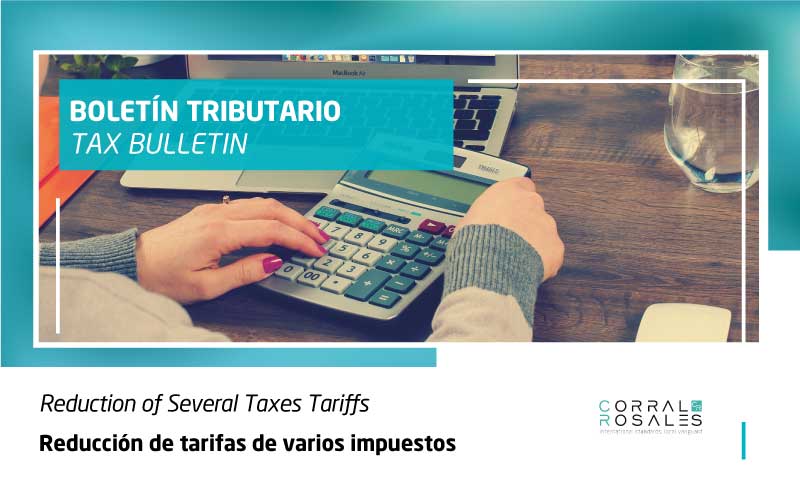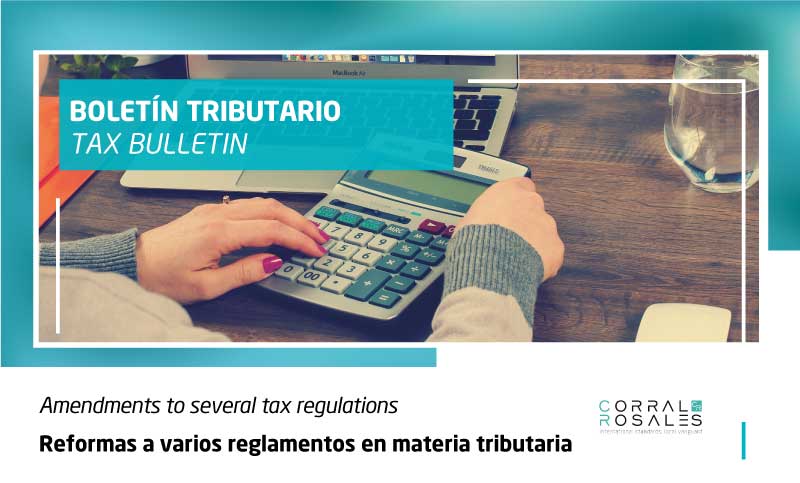Green hydrogen is emerging as a major alternative when it comes to taking on climate change. Forbes has called it the “energy of the future,”[1] and Goldman Sachs estimates that by 2050, the green hydrogen market will exceed US$11 trillion. [2]
In Latin America, Chile is one of the countries that is at the forefront. In 2020, the nation launched its “National Green Hydrogen Strategy,”[3] and just two years later, several projects were announced, including: HyEx, which will produce green hydrogen for mining; Highly Innovative Fuels (HIF), to generate fuels based on green hydrogen[4]; and Antofagasta Renewable Energy and Mining (AMER), which will include the construction and operation of an electrolyser capable of producing around 30 tons of green hydrogen per day.[5]
In Ecuador, green hydrogen is already considered a fundamental element for the decarbonized energy transition,[6] and the country will begin working[7] on a roadmap[8] for its implementation.
This article elaborates on what green hydrogen is, delving into its concept and challenges, and providing several conclusions.
I. Green Hydrogen
Hydrogen is “…the lightest chemical element that exists, its atom is made up of one proton and one electron and is stable in the form of a diatomic molecule (H2).” [9] It is not isolated in nature, but rather coexists with other elements such as oxygen (H2O) or carbon (forming organic compounds).[10] This means that hydrogen cannot be obtained directly and needs to be produced.[11]
According to the International Renewable Energy Agency[12] (hereinafter, “IRENA”), hydrogen can be produced using multiple processes. A color-based nomenclature system has been assigned to differentiate the various production processes;
- Gray hydrogen is produced with fossil fuels (e.g. from methane by steam reforming or coal gasification) and its use generates significant CO2 emissions. About 95% of the total world hydrogen production is grey.
- Blue hydrogen is gray hydrogen with an added capture and storage of CO2 emissions. However, studies show that this capture and storage has an efficiency of between 85% and 95%, in the best of scenarios, meaning that it emits between 5% and 15% of CO2. This means that it reduces emissions, but does not eliminate them.
- Green hydrogen is produced through processes that use only renewable energy and do not generate CO2 emissions, which makes a significant contribution to tackling climate change. Electrolysis is the most mature and consolidated process on the market. This consists[13] of breaking down water molecules (H2O) into oxygen and hydrogen[14] through an electrolyser[15] that is powered by electrical energy from renewable sources (e.g., wind, solar, etc.). There are other processes (including biomass gasification, pyrolysis, thermochemical division of water, photocatalysis, combined dark fermentation), but they have not yet reached a commercial scale, so they have not been considered in this article.
As shown here, the difference is not in the hydrogen itself, but rather the method for producing it.
The Race to Zero[16] campaign under the United Nations Framework Convention on Climate Change[17] establishes a goal by 2050 of reducing “… greenhouse gas emissions to as close to zero emissions as possible…”[18] Achieving this will require substituting fossil fuels with renewable energies to cover global energy demand.[19] Such alternatives include green hydrogen.[20] By 2050, this industry could “…reduce 6 billion tons of greenhouse gases…”[21]
Because of the environmental benefits surrounding green hydrogen, its uses have expanded to sectors where more value can be generated. Initially,[22] green hydrogen use was limited to light-duty fuel cell vehicles (or FCEVs). Today it is used widely and large amounts of green hydrogen have been planned for industries that generate major amounts of CO2 emissions that are difficult to mitigate, which include: the steel industry, oil refining, maritime and air transportation.[23][24][25]
Sweden’s SSAB [26] uses green hydrogen instead of coal to produce “green steel,” and maintains that it would reduce up to 10% of its annual emissions of CO2.[27] Shell will invest in the construction of a project in Rotterdam to produce around 60 tons of green hydrogen per day and allocate it to oil refining.[28]
Additionally, green hydrogen can be stored for long periods and later used to generate electrical energy.[29] Aces Delta, a joint venture between Mitsubishi Power Americas and Magnum Development LLC, has set out to build “…the largest green hydrogen production and storage facility in the world” [30] in Delta, Utah.
II. Challenges
The biggest challenge facing green hydrogen revolves around reducing its high cost of production, which depends mainly on the capital costs of electrolysis and the price of electrical energy used for said production. In 2019, green hydrogen was two to three times more expensive to produce than gray hydrogen.[31]
However, trends have pointed to a reduction in the prices of electricity produced by renewable sources and the capital costs of electrolysis, which means that the production costs of green hydrogen are expected to decrease. In this regard, Wood Mackenzie published a report suggesting that costs will be reduced by up to 64% by 2030.[32]
Another challenge is the lack of infrastructure for the transportation and storage of green hydrogen. In 2020, worldwide, there were only 5,000 kilometers of transmission pipelines for green hydrogen and more than 3 million kilometers for natural gas. This means that either new infrastructure needs to be created or adaptations need to be made to existing infrastructure insomuch as possible.[33]
It will also be necessary for humanity to recognize the value of green hydrogen in the fight against climate change in order to generate enough demand to justify the industry’s development.
To face these challenges and promote the generation and consumption of green hydrogen, one key development will be an adequate legal framework.
In Ecuador, as provided in articles 261.7 and 261.11 of the Constitution, the State has exclusive jurisdiction over natural and energy resources. Additionally, under article 313, it is the State’s responsibility to administer, regulate, control, and manage strategic sectors, which include all forms of energy.
The Organic Law of the Public Service of Electric Power and its Regulations govern the development, financing, operation, and commercialization of electric power in Ecuador, including the promotion and execution of energy projects based on renewable energy sources, which would be the basis for the production of green hydrogen by electrolysis.
However, the Ecuadorian legal system contains no specific regulation on green hydrogen. This makes it important to structure an effective legal regime that fully addresses the entire value chain and promotes its production (through electrolysis or other processes), distribution, and use. Said regime must include short- and long-term commitments that provide security and encourage the private sector to assume the risk of investing in this new industry, as well as the fiscal and financial incentives or associated benefits to attract said investment.
Within this legal framework, a recommendation is made, among other things, to include guidelines fit to the reality of each country:
- Identify priorities. If a country has enough renewable energy sources, it will be able to focus its activity on generating green hydrogen at a competitive cost. In other cases, importation will be a better option.
- Identify applications or uses that generate greater value. It makes no sense to use green hydrogen in sectors where efficient and cheaper alternatives exist. Hence, its use is focused on hard to abate sectors such as steel, maritime, and air transport.
- Facilitate and promote the flow of capital for the creation, expansion, or reuse of infrastructure for green hydrogen, as well as the manufacture or import and installation of the technologies that allow its production (e.g. electrolyzers, which are the devices that make it possible to carry out electrolysis processes in a controlled manner).
- Establish tax rebates to offset competition from those jurisdictions where gray hydrogen production remains attractive.
- Promote the switch to green hydrogen through loans or funds dedicated to that industry; special prices or rates for green hydrogen; promote the market for “green” products.
III. Summary
Green hydrogen could help in the fight against climate change. In addition, if the industry develops as expected, social and economic benefits could be obtained, since it would promote the growth of skills and human capital, as well as productive diversification, job creation, and investment.
The success of green hydrogen may vary depending on the reality and objectives of each country. Interest in green hydrogen may be higher or lower than expected and, therefore, the projections may be more or less optimistic.
In any case, the fight against climate change, reduction of the capital costs of electrolysis, and the price of electrical energy from renewable sources have generated a favorable scenario for the development of green hydrogen around the world, which can be promoted through an effective legal framework.
In Ecuador, a legal regime needs to be structured that, coupled with the nation’s reality and objectives, addresses the entire value chain of green hydrogen in a way that provides legal certainty and clear incentives or benefits to private investment.
[1] BBC, Green Hydrogen: Green hydrogen: 6 countries that lead the production of one of the “energies of the future” (and which is the only one in Latin America), March 31, 2021, https://www.bbc.com/world/news-56531777
[2] BBC, Renewable energies: what are green, blue and black hydrogens (and why billions are invested in two of them), August 26, 2020, https://www.bbc.com/world/news-53925884
[3] Chilean Ministry of Energy, National Green Hydrogen Strategy, November 2020, https://fch.cl/wp-content/uploads/2021/07/estrategia_nacional_de_hidrogeno_verde_-_chile.pdf
[4] BBC, Green Hydrogen: Green hydrogen: 6 countries that lead the production of one of the “energies of the future” (and which is the only one in Latin America), March 31, 2021, https://www.bbc.com/world/news-56531777
[5] H2 Business News, Air Liquide will develop a large renewable hydrogen electrolyser for Chile, August 15, 2022, https://h2businessnews.com/air-liquide-develop-a-great-renewable-hydrogen-electrolyzer-for-chile/
[6] CELEC EP, Ecuador offers investment opportunities around green hydrogen through the generation of renewable energies May 26, 2022, June 8, 2022,https://www.celec.gob.ec/electroguayas/index.php/sala-de-prensa-2/noticias/773-ecuador-ofrece-oportunidades-de-inversion-en-torno-al-hidrogeno-verde-a-traves-de-la-generacion-de-energias-renovables-26-mayo-2022
[7] Vistazo, Green hydrogen, a promising solution for decarbonization, September 2, 2022, https://www.vistazo.com/enfoque/hidrogeno-verde-prometedora-solucion-para-la-descarbonizacion-FK2927667
[8] H2LAC, Ecuador will have its own roadmap and national strategy for green hydrogen, April 27, 2022,https://h2lac.org/noticias/ecuador-tendra-su-propia-hoja-de-ruta-y-estrategia-nacional-para-el-hidrogeno-verde/
[9] National Hydrogen Center, Hydrogen, retrieved on September 26, 2022, https://www.cnh2.es/el-hidrogeno/,
[10] National Hydrogen Center, Hydrogen, retrieved on September 26, 2022, https://www.cnh2.es/el-hidrogeno/,
[11] Ibid.
[12] IRENA, Hydrogen: A renewable energy perspective, September 2019, https://www.irena.org/publications/2019/Sep/Hydrogen-A-renewable-energy-perspective
[13] BBC, Renewable energies: what are green, blue and black hydrogens (and why billions are invested in two of them), August 26, 2020, https://www.bbc.com/world/news-53925884
[14] Chile Foundation, A strategic opportunity for Chile: green hydrogen, retrieved on September 29, 2022, https://fch.cl/iniciativa/hidrogeno-verde/
[15] BBC, Green Hydrogen: Green hydrogen: 6 countries that lead the production of one of the “energies of the future” (and which is the only one in Latin America), March 31, 2021, https://www.bbc.com/world/news-56531777
[16] This campaign represents 1,049 cities, 67 regions, 5,235 companies, 441 of the largest investors and 1,039 higher education institutions, from a total of 120 countries. For more information, see: https://unfccc.int/climate-action/race-to-zero-campaign
[17] United Nations, Race To Zero Campaign, visited on September 29, 2022, https://unfccc.int/en/node/227769
[18] United Nations, Getting to Net Zero Emissions:
the world pledges to take action, visited on September 29, 2022, https://www.un.org/es/climatechange/net-zero-coalition
[19] La República, A country with a future in green hydrogen, August 31, 2022, https://www.larepublica.co/especiales/camino-a-la-sostenibilidad/un-pais-con-futuro-en-el-hidrogeno-verde-3436269
[20] Ibidem.
[21] CELEC EP, Ecuador offers investment opportunities around green hydrogen through the generation of renewable energies May 26, 2022, June 8, 2022,https://www.celec.gob.ec/electroguayas/index.php/sala-de-prensa-2/noticias/773-ecuador-ofrece-oportunidades-de-inversion-en-torno-al-hidrogeno-verde-a-traves-de-la-generacion-de-energias-renovables-26-mayo-2022
[22] IRENA, Green hydrogen: A guide to policy making, November 2020.https://www.irena.org/publications/2020/Nov/Green-hydrogen
[23] EKOS, Green Hydrogen: What is it and why do they call it the energy of the future? June 1, 2022, https://www.ekosnegocios.com/articulo/hidrogeno-verde-que-es-y-por-que-lo-llaman-la-energia-del-futuro
[24] BBC, Renewable energies: what are green, blue and black hydrogens (and why billions are invested in two of them), August 26, 2020, https://www.bbc.com/world/news-53925884
[25] Chile Foundation, A strategic opportunity for Chile: green hydrogen, retrieved on September 29, 2022, https://fch.cl/iniciativa/hidrogeno-verde/
[26] SSAB, About SSAB, visited on September 29, 2022, https://www.ssab.com/en/company/about-ssab
[27] EKOS, Green Hydrogen: What is it and why do they call it the energy of the future? June 1, 2022, https://www.ekosnegocios.com/articulo/hidrogeno-verde-que-es-y-por-que-lo-llaman-la-energia-del-futuro
[28] H2Businessnews, Shell: “Green hydrogen will cost less than blue fossil fuel,” August 10, 2022, https://h2businessnews.com/shell-el-hidrogeno-verde-costara-menos-que-el-azul-de-origen-fosil/
[29] IRENA, Green hydrogen: A guide to policy making, November 2020.https://www.irena.org/publications/2020/Nov/Green-hydrogen
[30] H2Businessnews, Construction of the largest underground hydrogen storage project in the world, August 8, 2022, https://h2businessnews.com/construyen-el-mayor-proyecto-de-almacenamiento-subterraneo-de-hidrogeno-del-mundo/
[31] IRENA, Hydrogen: A renewable energy perspective, September 2019, https://www.irena.org/publications/2019/Sep/Hydrogen-A-renewable-energy-perspective
[32] BBC, Green Hydrogen: Green hydrogen: 6 countries that lead the production of one of the “energies of the future” (and which is the only one in Latin America), March 31, 2021, https://www.bbc.com/world/news-56531777
[33] In this regard, IRENA notes the following: “One option would be repurposing pipelines currently dedicated to fossil gas for the transportation of green hydrogen. Repurposing pipelines may involve the replacement of valves, regulators, compressors, and metering devices, but, in some cases, depending on the pipeline material, it could also require replacing the actual pipelines.” IRENA, Green Hydrogen Supply: A guide to policy making, May 2021, p. 15, https://irena.org/-/media/Files/IRENA/Agency/Publication/2021/May/IRENA_Green_Hydrogen_Supply_2021.pdf
Mario Fernández
Associates at CorralRosales
mfernandez@corralrosales.com
Rafael Serrano
Associates at CorralRosales
rserrano@corralrosales.com















